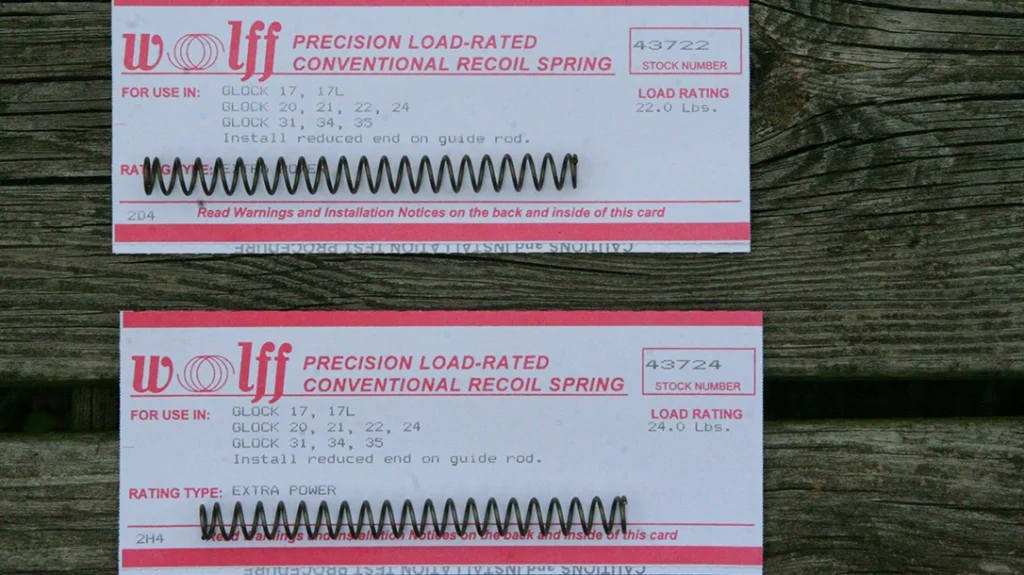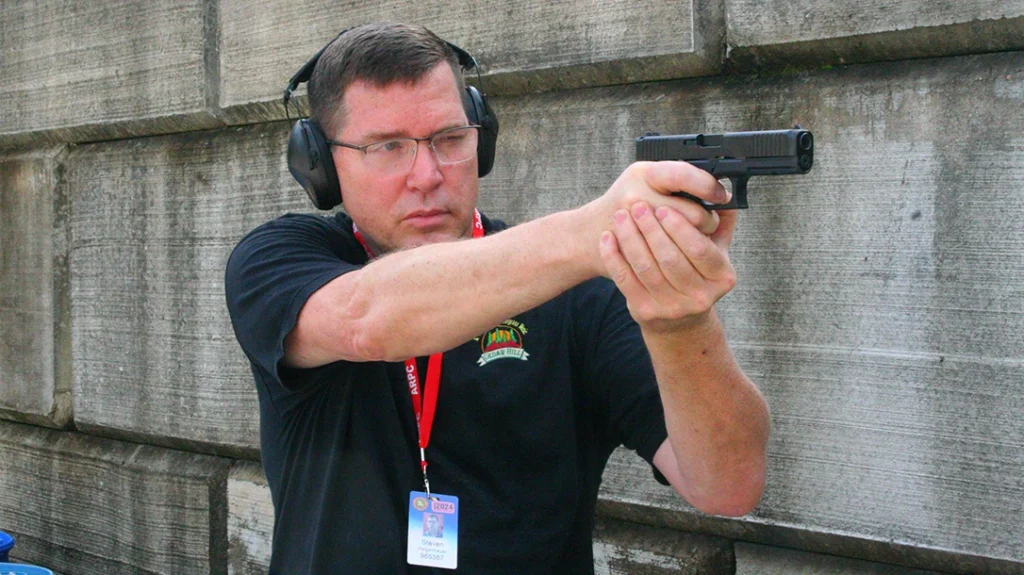If you run any piece of machinery at its top end for an extended period, be it a blender or an engine, it will break down. Handguns are no different.
The Glock 20, like most Glocks, comes with a 17-pound recoil spring. This is to cover a wide array of loads. Over time, the frame of the pistol can be damaged with the use of heavy loads.
When the Witness was introduced in 10mm there were problems with the frames cracking. This was also the case with the Colt Delta Elite. The Delta Elite was remedied by a stress relief cut in the frame. The Witness, it was discovered, was equipped with the same 13-pound spring as the 9mm. Once a heavier spring was installed in the frame, cracking on the Witness went away.
Advertisement — Continue Reading Below
The Glock frame is tough and the chances of it cracking or breaking is unlikely for most shooters. However, I want my pistol to last and if I can help keep it in good condition and avoid the chance of damaging the frame, I will do it.
Heavy Loads & Strong Springs
Bill Lester of Jager Products, Inc. who has been producing recoil guide rods and other Glock products for nearly 20 years explains, “The stock recoil assembly wasn’t designed for the recoil of the heavy 10mm loads. The Glock was built around the 9mm NATO cartridge. They used the same recoil assembly in all the standard frame pistols regardless of caliber. It is over sprung for some and under sprung for others.”
Advertisement — Continue Reading Below
“The original Glock 17 recoil spring assembly was about 17 pounds and it was just too much for most people’s target rounds. The rods I offer allow people to be able to change their spring weights. The Gen 4 Glocks used a captured spring system, and many people didn’t like them. They are over sprung for most target shooters.”
When you get into the 10mm most people find the spring is under sprung and will switch over to the Wolff Gunsprings. There’s no right or wrong answer of what you should have in your gun. Most shooters will test fire their guns with different springs and see how the ejection patten looks and how the sights behave.
How the Sights Behave
This was a new concept to me, so I pushed Lester for clarification.
Advertisement — Continue Reading Below
“If I’m shooting a 9mm and the recoil spring is too heavy, the brass will dribble out of the gun. It will feel “mushy” when fired. The front sight doesn’t track, the recoil will feel softer, and the entire pistol will porpoise up and down,” Lester continues, “By using a lighter spring, recoil will feel snappier, but the front sight will return to the target quicker. This is important to target shooting because you will be more accurate during rapid fire like double-tap drills when using a lighter, snappier spring.”
The guide rods Lester produces are the Gen 3 style guide rods, and you can tune your spring to the loads you are shooting. When shooting the 10mm with heavy loads the cartridge can produce enough pressure to prematurely open the breech face on some guns which affects the burn rate of the powder. A trip to the range to chronograph some loads will show an extreme spread of velocities. A sure tell sign of this phenomenon. This can be alleviated by installing a stronger recoil spring.

Advertisement — Continue Reading Below
Lester suggests if you plan to continue using your stock spring with heavier recoiling cartridgesto periodically check your frame for wear where the slide is impacting the frame. If it starts beating into the inserts, then you need to change to a heavier spring.
It’s not a good idea to beat the frame up. That is why the spring is there in the first place. To make the gun function and prevent the frame from being damaged. Many Glock armorers suggest changing out the recoil spring every 5,000 rounds on new production guns. However, I’ve encountered many Model 20 owners who switch out the spring after 1,500 rounds.
Quick Test
A quick test to determine if the recoil spring needs replaced is to clear the pistol. With no magazine and ensure chamber is clear, point the pistol straight up, press the trigger and hold it to the rear. Next, pull back the slide and ease it forward slowly. If it goes into battery, the spring is good. If not, replace the spring.
Advertisement — Continue Reading Below

The best indicator of what weight spring you should be using is to look at your ejection pattern. If your brass is flying 25 feet away, it is under sprung. If it is just dribbling out of the ejection port, then you might be over sprung. If the brass is ejecting at a reasonable distance and the gun is firing, extracting and ejecting consistently, then you can fine tune your recoil spring weight to see how your front sight tracks.
